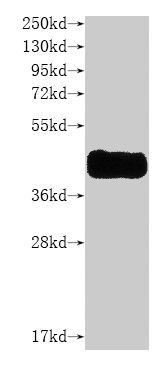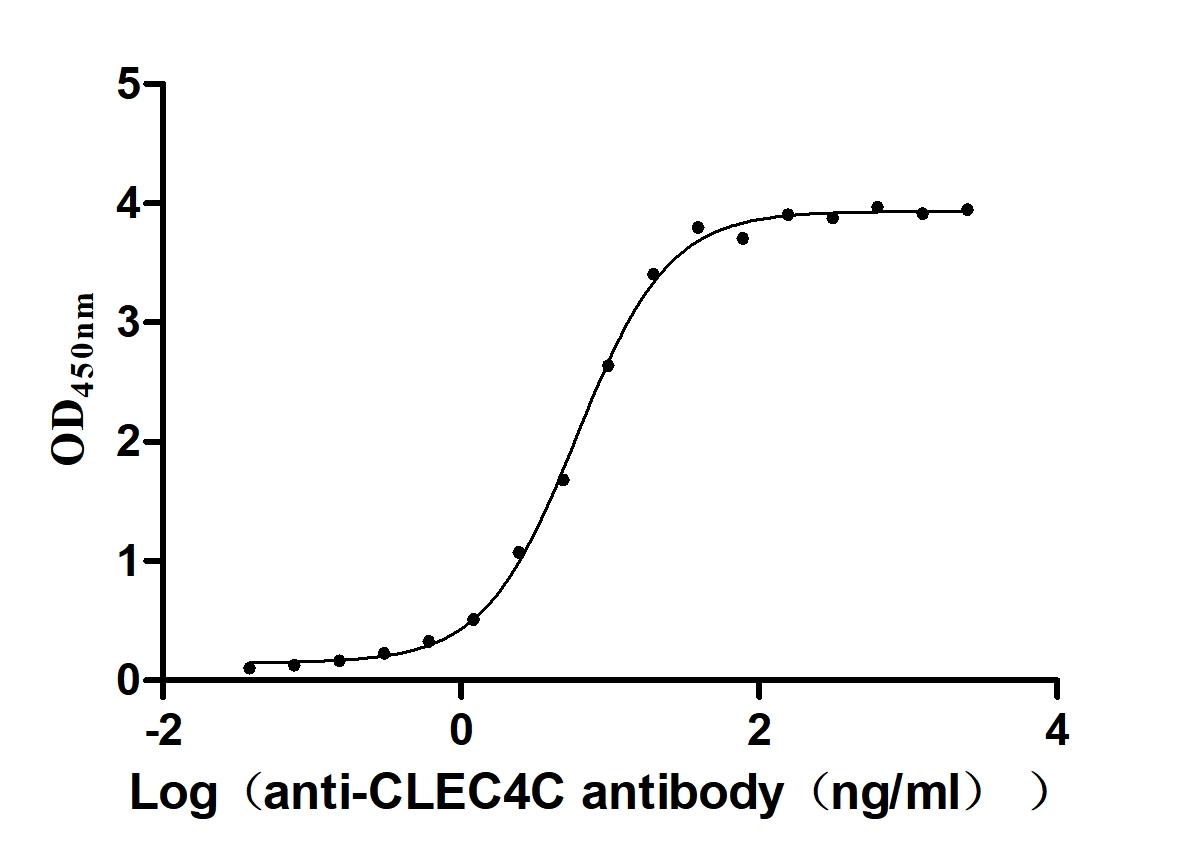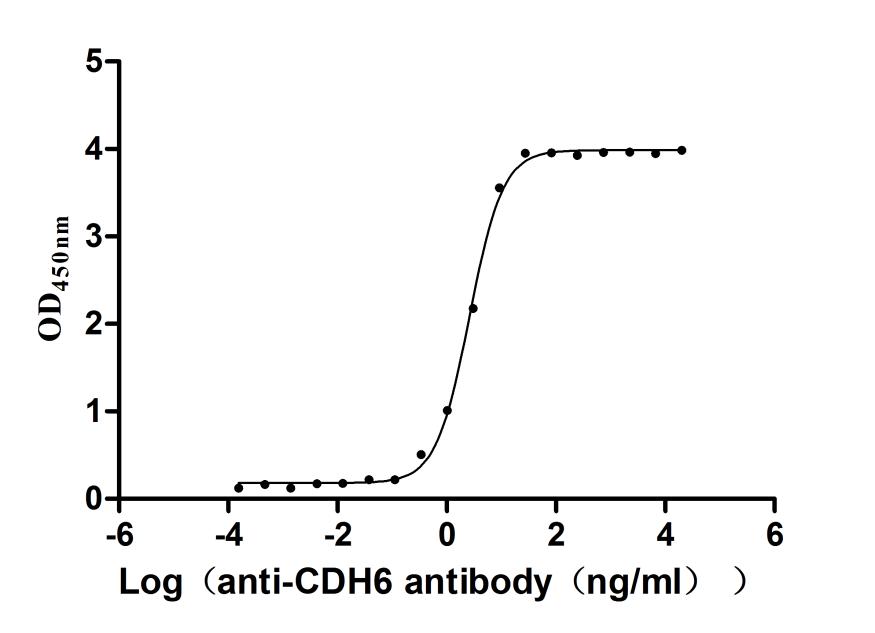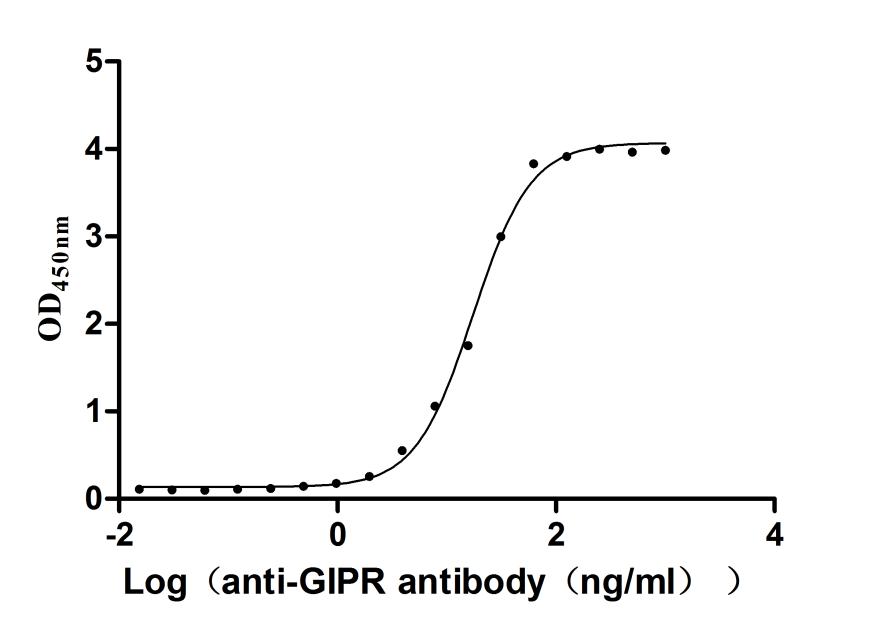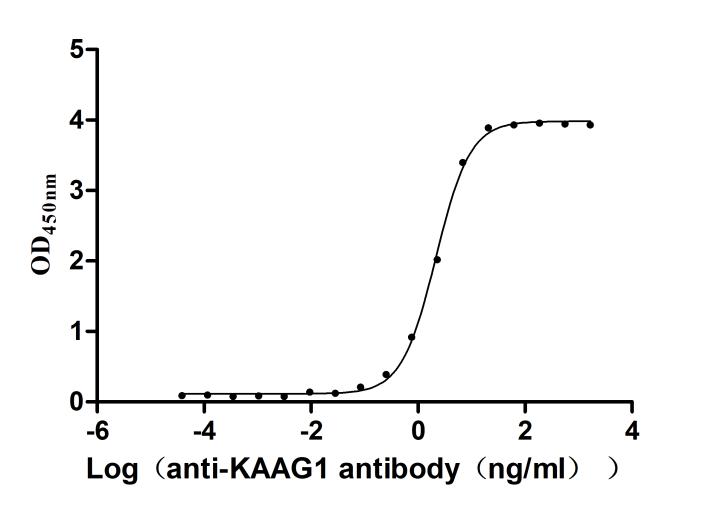-
中文名稱:人LOXL1重組蛋白
-
貨號(hào):CSB-EP013040HU(A4)
-
規(guī)格:¥2340
-
圖片:
-
(Tris-Glycine gel) Discontinuous SDS-PAGE (reduced) with 5% enrichment gel and 15% separation gel.
-
Based on the SEQUEST from database of E.coli host and target protein, the LC-MS/MS Analysis result of CSB-EP013040HU(A4) could indicate that this peptide derived from E.coli-expressed Homo sapiens (Human) LOXL1.
-
Based on the SEQUEST from database of E.coli host and target protein, the LC-MS/MS Analysis result of CSB-EP013040HU(A4) could indicate that this peptide derived from E.coli-expressed Homo sapiens (Human) LOXL1.
-
-
其他:
產(chǎn)品詳情
-
純度:Greater than 85% as determined by SDS-PAGE.
-
基因名:LOXL1
-
Uniprot No.:
-
別名:LOXL1; LOXLLysyl oxidase homolog 1; EC 1.4.3.-; Lysyl oxidase-like protein 1; LOL
-
種屬:Homo sapiens (Human)
-
蛋白長度:Full Length of Mature Protein
-
來源:E.coli
-
分子量:53.0 kDa
-
表達(dá)區(qū)域:95-574aa
-
氨基酸序列RQAPSLPLPGRVGSDTVRGQARHPFGFGQVPDNWREVAVGDSTGMARARTSVSQQRHGGSASSVSASAFASTYRQQPSYPQQFPYPQAPFVSQYENYDPASRTYDQGFVYYRPAGGGVGAGAAAVASAGVIYPYQPRARYEEYGGGEELPEYPPQGFYPAPERPYVPPPPPPPDGLDRRYSHSLYSEGTPGFEQAYPDPGPEAAQAHGGDPRLGWYPPYANPPPEAYGPPRALEPPYLPVRSSDTPPPGGERNGAQQGRLSVGSVYRPNQNGRGLPDLVPDPNYVQASTYVQRAHLYSLRCAAEEKCLASTAYAPEATDYDVRVLLRFPQRVKNQGTADFLPNRPRHTWEWHSCHQHYHSMDEFSHYDLLDAATGKKVAEGHKASFCLEDSTCDFGNLKRYACTSHTQGLSPGCYDTYNADIDCQWIDITDVQPGNYILKVHVNPKYIVLESDFTNNVVRCNIHYTGRYVSATNCKIVQS
Note: The complete sequence may include tag sequence, target protein sequence, linker sequence and extra sequence that is translated with the protein sequence for the purpose(s) of secretion, stability, solubility, etc.
If the exact amino acid sequence of this recombinant protein is critical to your application, please explicitly request the full and complete sequence of this protein before ordering. -
蛋白標(biāo)簽:Tag-Free
-
產(chǎn)品提供形式:Liquid or Lyophilized powder
Note: We will preferentially ship the format that we have in stock, however, if you have any special requirement for the format, please remark your requirement when placing the order, we will prepare according to your demand. -
緩沖液:Tris-based buffer,50% glycerol
-
儲(chǔ)存條件:Store at -20°C/-80°C upon receipt, aliquoting is necessary for mutiple use. Avoid repeated freeze-thaw cycles.
-
保質(zhì)期:The shelf life is related to many factors, storage state, buffer ingredients, storage temperature and the stability of the protein itself.
Generally, the shelf life of liquid form is 6 months at -20°C/-80°C. The shelf life of lyophilized form is 12 months at -20°C/-80°C. -
貨期:3-7 business days
-
注意事項(xiàng):Repeated freezing and thawing is not recommended. Store working aliquots at 4°C for up to one week.
-
Datasheet & COA:Please contact us to get it.
引用文獻(xiàn)
- Lysyl Oxidase-Like 1 (LOXL1) Up-Regulation in Chondrocytes Promotes M1 Macrophage Activation in Osteoarthritis via NF-κB and STAT3 Signaling Y Jiang, S Wang, W Zhu, X Liu, Y Yang,ImmunoTargets and Therapy,2025
相關(guān)產(chǎn)品
靶點(diǎn)詳情
-
功能:Active on elastin and collagen substrates.
-
基因功能參考文獻(xiàn):
- the rs11638944:C>G transversion exerts a cis-acting effect on the expression levels of LOXL1, mediated by differential binding of the transcription factor retinoid X receptor alpha and by modulating alternative splicing of LOXL1, eventually leading to reduced levels of LOXL1 mRNA in cells and tissues of risk allele carriers for pseudoexfoliation syndrome PMID: 28534485
- LOXL1/LOXL2 gene expression and protein levels were increased in Idiopathic pulmonary fibrosis (IPF) versus non-IPF. PMID: 29125826
- These findings provide evidence for a functional role of alternative splicing coupled to NMD in the posttranscriptional regulation of LOXL1 gene expression and suggest this mechanism to represent a dynamic mode of adapting LOXL1 expression to PEX-associated environmental and nutritional cues. PMID: 29164236
- remenopausal and postmenopausal women with Pelvic Organ Prolapse (POP) exhibit differential expression of LOXL1 suggesting different pathways in the pathogenesis of POP. The role of biopsy location on LOXL1 expression requires further investigation. PMID: 26829347
- In this study, we found no significant association between allele and genotype frequencies of APOE; the intronic SNP rs2165241 and the non-synonymous SNP rs3825942 in exon 1 of LOXL1 are significantly associated with pseudoexfoliation syndrome and exfoliation glaucoma in the Turkish population. PMID: 27028259
- A rare protective allele at LOXL1,Tyr407Phe, was identified. It is found exclusively in the Japanese population. It confers 25-fold resistance to XFS. It segregated with the common rs3825942[A] (p.Asp153) in all but 2 patients examined. In spheroids, this haplotype conferred a significant increase in the strength of cellular adhesion in comparison to 3 haplotypes with the wild-type allele. PMID: 28553957
- Findings of this current study indicate a different LOXL1 gene expression pattern compared with a recent study that was also performed in the Turkish population. PMID: 27753755
- LOXL1 transcriptional activity was dramatically reduced when a recombinant DNMT3A was concomitantly overexpressed. PMID: 27396912
- The present study, for the first time, shows that the pseudoexfoliation syndrome-associated variant residues in LOXL1 influence processing of the protein, most likely by BMP-1. PMID: 26997634
- In this study group of Turkish population, no LOXL1 mutations were found. No associations between the defined SNPs (A320A, R141L and F184F) and the severity of the disease were detected. PMID: 26758070
- To identify additional candidate functional variants, we sequenced the entire LOXL1 genomic locus ( approximately 40 kb) in 50 indigenous, black South African XFS cases and 50 matched controls. PMID: 26307087
- This is the first study associating two SNPs of LOXL1 (rs3825942 and rs2165241) and XFS/XFG in a Spanish population, confirming findings in patients from Europe. PMID: 24892565
- Our meta-analysis indicates that rs1048661 had weak association with XFG/XFS; rs3825942 had strongly association with XFG/XFS; and rs2165241 had significant risk with XFG/XFS in some ethnicity. PMID: 25304275
- CTR1, ATP7A, and lysyl oxidase were upregulated in the lung tissues and pulmonary arteries of mice with hypoxia-induced pulmonary hypertension and pulmonary arterial smooth muscle cells. PMID: 24614111
- Different SNPs in LOXL1 affect risk of pseudoexfoliative glaucoma in different ethnic groups [meta-analysis] PMID: 26404116
- When the LOXL1 variants were used as disease markers for clinically undetectable exfoliation syndrome (EX), there was no association between central retinal vein occlusion and EX. PMID: 25130441
- results indicate that hypermethylation of CpG islands in the promoter region of the LOXL1 gene leads directly to downregulation of LOXL1 mRNA and protein, which functions as an essential mechanism in the pathogenesis of Pseudoexfoliation Syndrome PMID: 26348632
- Data indicate that single-nucleotide polymorphisms (SNPs) distributing in not only lysyl oxidase-like 1 gene (LOXL1) but also TBC1 domain family member 21 protein (TBC1D21) and promyelocytic leukemia protein (PML). PMID: 24938310
- Single nucleotide polymorphisms of the LOXL1 gene are associated with pseudoexfoliation glaucoma in the Spanish population. PMID: 26319397
- The polymorphisms of the LOXL1 gene were associated with the susceptibility to primary open-angle glaucoma. PMID: 25750511
- Our results demonstrate that only a small proportion of individuals with the high-risk GG/GG diplotype may actually be found to clinically manifest exfoliation syndrome. PMID: 25041436
- Data suggest that expression of LOXL1 and FBLN5 (fibulin 5) (but not expression of elastin) is down-regulated in uterosacral ligaments of postmenopausal women with pelvic organ prolapse. PMID: 22487196
- This polymorphism seems to be associated with high risk for primary open-angle glaucoma in a Mediterranean population. PMID: 24893574
- p66beta might be important for the regulation of LOX in the nucleus. PMID: 25118846
- There were no significant difference in allele frequency distribution of LOXL1 rs1048661rs3825942 and rs2165241 between primary open-angle glaucoma (POAG) and normal controls (P=0.322, P=0.660, P=0.965). PMID: 25636109
- Pathogenetic stimuli induced a significant increase in the expression of LOXL1 and elastic proteins and resulted in their assembly into exfoliation syndrome-like fibrils in vitro. PMID: 25275906
- Collectively, these results suggest that dysregulation of LOXL1 expression is a contributing factor to exfoliation disease development. PMID: 25275910
- Human LOX gene encodes 2 variants, LOX and LOX-v2, both of which function as amine oxidases with distinct tissue specificities. PMID: 25017124
- Studies suggest that LOXL1 rs1048661 TT, rs3825942 AA, and rs2165241 CC were associated with a reduced risk of developing pseudoexfoliation syndrome and pseudoexfoliation glaucoma (PEXS/PEXG). PMID: 24603551
- Haplotypes of LOXL1 are associated with PG-PDS independently from rs1048661, leading to a differential expression of the transcript. PMID: 24739284
- Sequencing of 7 exons and regulatory regions of LOXL1 identified 11 additional sequence variants; only rs41435250 showed an association (P = 3.80 x 10-5 [0.49]) with pseudoexfoliation syndrome and glaucoma PMID: 24809751
- LOXL1 gene contributes to onset of PEXG through PEX. Gene variants of LOXL1 do not help to identify those with PEX at increased risk for glaucoma development. PMID: 24917141
- allele T of LOXL1 rs41435250 is a novel risk genetic factor for pseudoexfoliation syndrome/pseudoexfoliation glaucoma development. PMID: 24068861
- High Lysyl Oxidase expression is associated with non-small cell lung cancer. PMID: 23886154
- LOXL1 is more abundant in the deposits in the iris region and, alternatively APOE is concentrated in the PEX material accumulated in the pupillary area of the anterior lens capsule. PMID: 23411028
- The homozygote TT polymorphism in the rs1048661 and rs2165241 region of LOX-L1 gene may be responsible for stress urinary incontinance physiopathology. PMID: 22765198
- Association of LOXL1 with exfoliation syndrome and exfoliation glaucoma was investigated and apolipoprotein E and MTHFR polymorphisms as genetic risk factors for both conditions, were evaluated. PMID: 23687437
- Certain genetic variants in LOXL1 confer risk for pseudoexfoliation syndrome in Greek populations. PMID: 23869164
- Three SNPs of LOXL1 (rs1048661, rs3825942, and 2,165,241) are highly associated with pseudoexfoliation syndrome in a Korean population. PMID: 23441117
- None of the patients with exfoliation syndrome/glaucoma has the adenine (A) allele single nucleotide polymorphism (SNP) of rs3825942, whereas 16% of the control subjects have the LOXL1 variant. PMID: 23378724
- Knockdown of E2F1 stabilized HIF-1alpha and promoted LOX expression, while knockdown of both E2F1 and HIF-1alpha prevented the up-regulation of LOX PMID: 23196386
- There was no significant difference in the frequency of the DNA copy number variants in the LOXL1 region between the exfoliation glaucoma cases and the controls. PMID: 23288989
- The -22G/C polymorphism may affect the expression of LOX, and that -22G/C and 473G/A polymorphisms may be new risk factors for osteosarcoma. PMID: 22911823
- study suggests that LOX G473A polymorphism is a new risk factor for ovarian cancer and that LOX protein might be a possible therapeutic target in ovarian cancer PMID: 22906264
- A significant association was found for the G allele of rs1048661 and rs3825942 in pseudoexfoliative glaucoma patients of Pakistani origin. PMID: 22605916
- The findings provide evidence for a pseudoexfoliation-specific elastinopathy of the lamina cribrosa resulting from a primary disturbance in LOXL1 regulation and elastic fiber homeostasis. PMID: 22633114
- The Saudi Arabian primary open angle glaucoma (POAG) population, similar to all other populations studied to date, demonstrates no association with SNPs associated with pseudoexfoliation glaucoma. PMID: 21510775
- The R141L and G153D variations in the NH2-terminal region of LOXL1 do not affect the amine oxidase activity of LOXL1 associated with exfoliation glaucoma. PMID: 22328822
- Spectroscopic results show that in all cases lysyl oxidase folds correctly but that the copper content, enzymatic activity, and redox-cycling ability depends on the mutation. PMID: 21190048
- Transforming Growth Factor-Beta induces up-regulation expression of lysyl oxidase family in anterior cruciate ligament and medial collateral ligament fibroblasts. PMID: 21674292
顯示更多
收起更多
-
相關(guān)疾病:Exfoliation syndrome (XFS)
-
亞細(xì)胞定位:Secreted, extracellular space.
-
蛋白家族:Lysyl oxidase family
-
組織特異性:Expressed in ocular tissues including the iris, ciliary body, lens and optic nerve. Not detected in the retina.
-
數(shù)據(jù)庫鏈接:
Most popular with customers
-
Recombinant Human Tumor necrosis factor ligand superfamily member 8 (TNFSF8), partial (Active)
Express system: Mammalian cell
Species: Homo sapiens (Human)
-
Recombinant Human papillomavirus type 16 Protein E7 (E7) (Active)
Express system: E.coli
Species: Human papillomavirus type 16
-
Recombinant Human T-cell surface protein tactile (CD96), partial (Active)
Express system: Mammalian cell
Species: Homo sapiens (Human)
-
Recombinant Human C-C chemokine receptor type 8 (CCR8)-VLPs (Active)
Express system: Mammalian cell
Species: Homo sapiens (Human)
-
Recombinant Macaca fascicularis C-type lectin domain family 4 member C(CLEC4C), partial (Active)
Express system: Mammalian cell
Species: Macaca fascicularis (Crab-eating macaque) (Cynomolgus monkey)
-
Recombinant Human Cadherin-6(CDH6),partial (Active)
Express system: Mammalian cell
Species: Homo sapiens (Human)
-
Recombinant Human Gastric inhibitory polypeptide receptor(GIPR),partial (Active)
Express system: Mammalian cell
Species: Homo sapiens (Human)
-
Recombinant Human Kidney-associated antigen 1 (KAAG1) (Active)
Express system: E.coli
Species: Homo sapiens (Human)

-SDS.jpg)
-1.jpg)
-2.jpg)

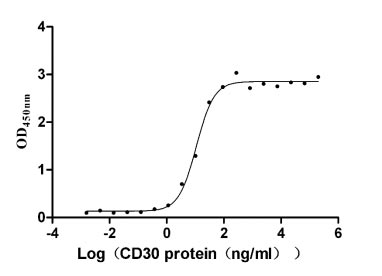
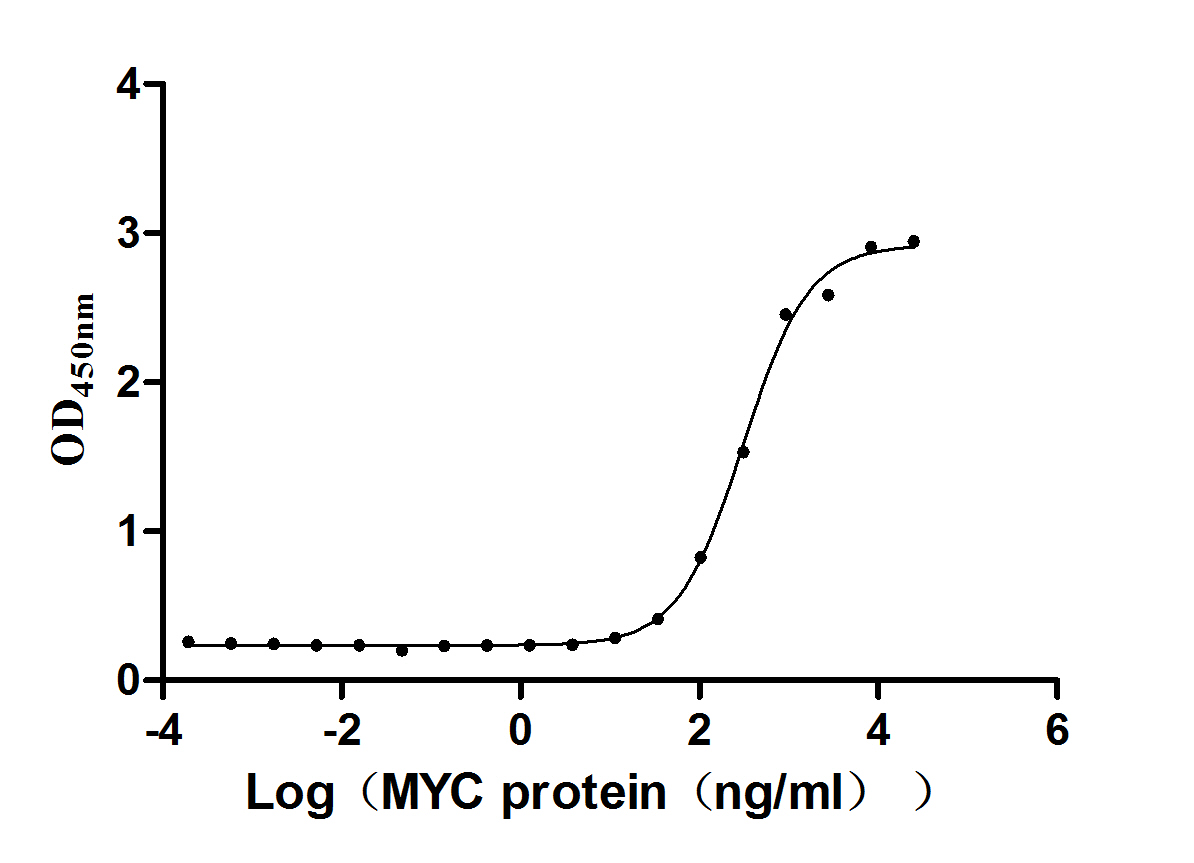
-AC1.jpg)
